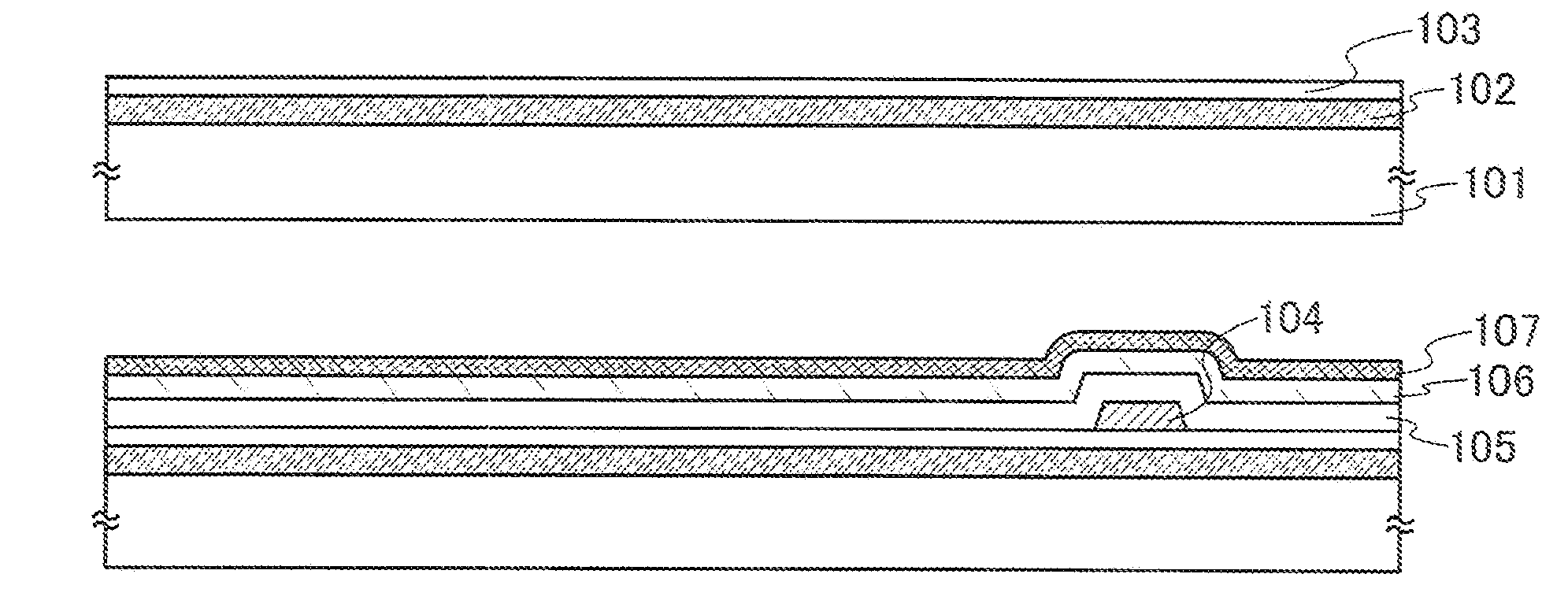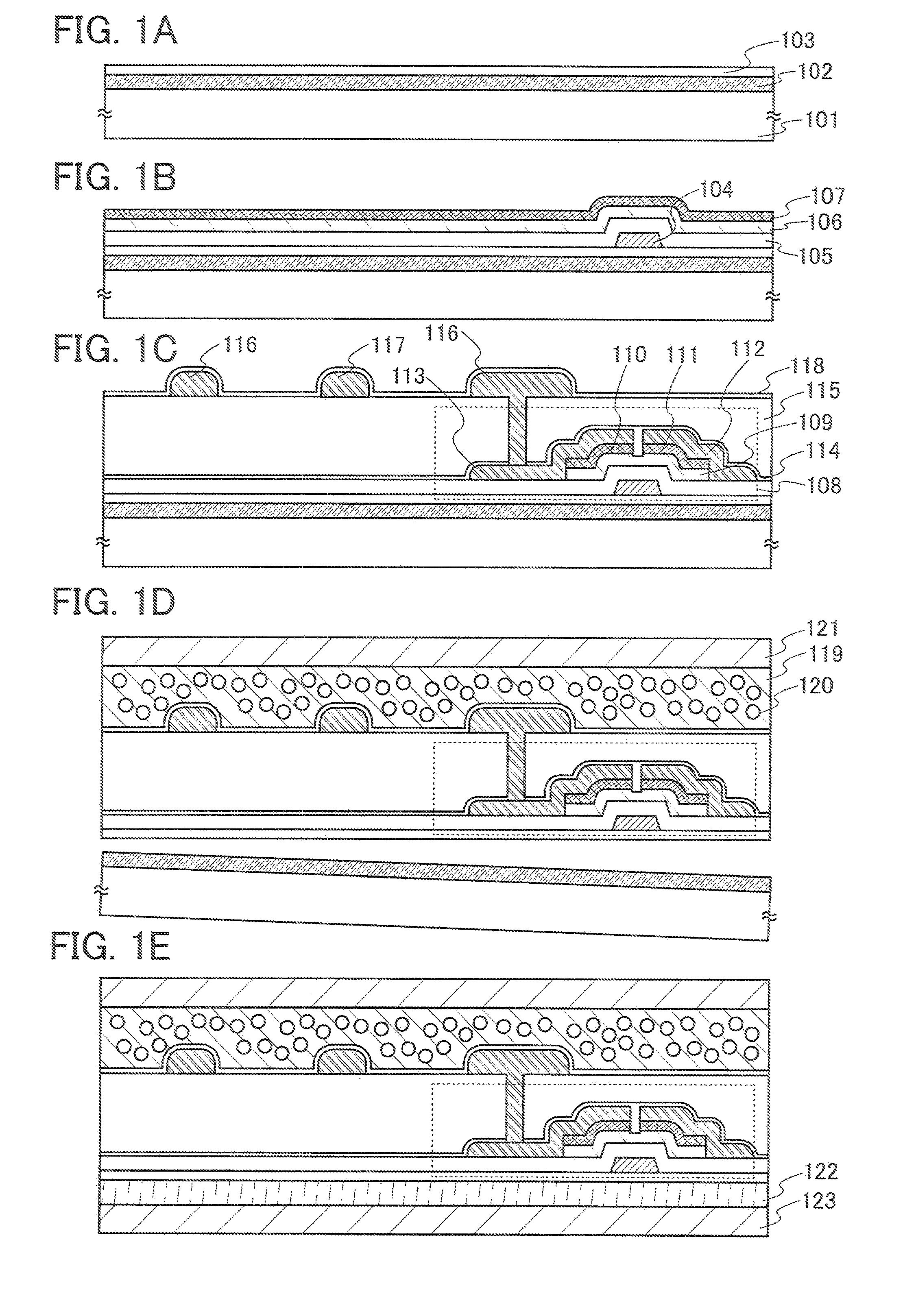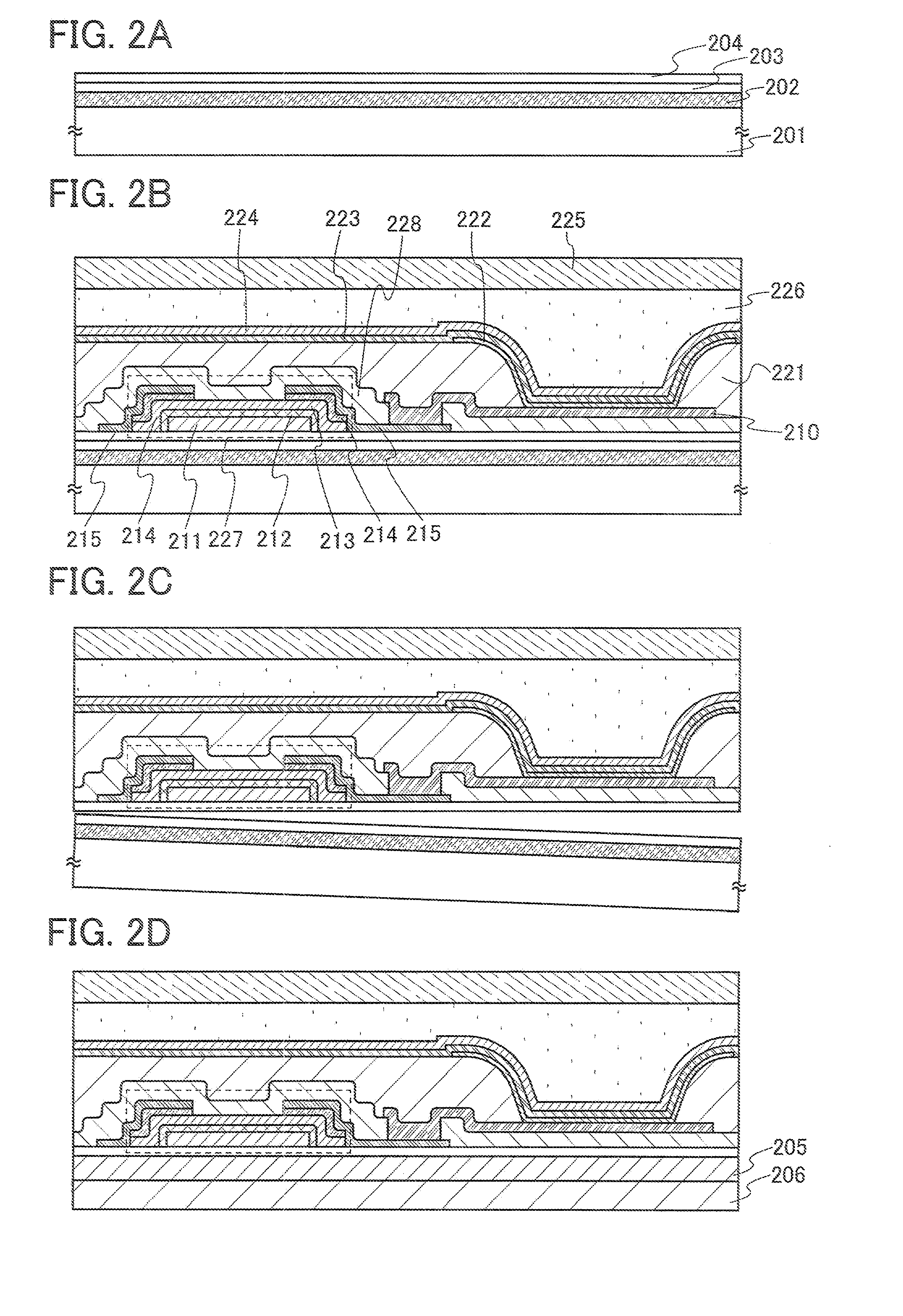Method for manufacturing a semiconductor device using a flexible substrate
a flexible substrate and semiconductor technology, applied in the direction of sustainable manufacturing/processing, semiconductor/solid-state device details, instruments, etc., can solve the problems of difficult to finely control the temperature of all treatment during the manufacturing process, plastic film may contaminate an element, and plastic film has less heat resistance and is more significantly expanded and contracted. to achieve the effect of smooth peeling step
- Summary
- Abstract
- Description
- Claims
- Application Information
AI Technical Summary
Benefits of technology
Problems solved by technology
Method used
Image
Examples
embodiment mode 1
[0052]An example of manufacturing a liquid crystal display device is explained here with reference to FIGS. 1A to 1E.
[0053]First, a molybdenum film 102 is formed over a substrate 101. The substrate 101 used here is a glass substrate. The molybdenum film 102 is a molybdenum film formed by a sputtering method with a thickness of 30 nm to 200 nm. Since the substrate may be fixed for a sputtering method, the thickness of the molybdenum film on the edge portion of the substrate tends to be nonuniform. Therefore, the molybdenum film on the edge portion is preferably removed by dry etching.
[0054]Next, a molybdenum oxide film 103 is formed by oxidation of a surface of the molybdenum film 102. The molybdenum oxide film 103 may be formed by oxidation of the surface with the use of pure water or ozone water or with the use of oxygen plasma. Alternatively, the molybdenum oxide film 103 may be formed by heating in an atmosphere including oxygen. FIG. 1A shows a cross-sectional view at a stage wh...
embodiment mode 2
[0073]Described here with reference to FIGS. 2A to 2D is an example of manufacturing an active-matrix light emitting device using an organic TFT.
[0074]First, a molybdenum film 202 is formed over a substrate 201. The substrate 201 used here is a glass substrate. The molybdenum film 202 is a molybdenum film formed by a sputtering method with a thickness of 30 nm to 200 nm.
[0075]Next, a molybdenum oxide film 203 is formed by oxidation of a surface of the molybdenum film 202. The molybdenum oxide film 203 may be formed by oxidation of the surface with the use of pure water or ozone water or with the use of oxygen plasma. Alternatively, the molybdenum oxide film 203 may be formed by heating in an atmosphere including oxygen. Further alternatively, it may be formed in a later step of forming an insulating film. When a silicon oxide film or a silicon oxynitride film is formed as the insulating film by a plasma CVD method, the surface of the molybdenum film 202 is oxidized; accordingly, the...
embodiment mode 3
[0103]An example of manufacturing a passive-matrix light emitting device over a flexible substrate is described here with reference to FIGS. 5A to 9.
[0104]In a passive (simple-matrix) light emitting device, a plurality of anodes arranged in stripes (strip-form) are provided perpendicularly to a plurality of cathodes arranged in stripes. A light emitting layer or a fluorescent layer is interposed at each intersection. Therefore, a pixel at an intersection of an anode selected (to which a voltage is applied) and a cathode selected emits light.
[0105]FIG. 5A shows a top view of a pixel portion before sealing. FIG. 5B shows a cross-sectional view taken along a dashed line A-A′ in FIG. 5A. FIG. 5C shows a cross-sectional view taken along a dashed line B-B′.
[0106]A molybdenum film 502, a molybdenum oxide film 503, and an insulating film 504 are stacked over a first substrate 501 similarly to Embodiment Mode 2. A plurality of first electrodes 513 are arranged in stripes at regular intervals...
PUM
| Property | Measurement | Unit |
|---|---|---|
| temperature | aaaaa | aaaaa |
| thickness | aaaaa | aaaaa |
| thickness | aaaaa | aaaaa |
Abstract
Description
Claims
Application Information
 Login to View More
Login to View More - R&D
- Intellectual Property
- Life Sciences
- Materials
- Tech Scout
- Unparalleled Data Quality
- Higher Quality Content
- 60% Fewer Hallucinations
Browse by: Latest US Patents, China's latest patents, Technical Efficacy Thesaurus, Application Domain, Technology Topic, Popular Technical Reports.
© 2025 PatSnap. All rights reserved.Legal|Privacy policy|Modern Slavery Act Transparency Statement|Sitemap|About US| Contact US: help@patsnap.com



